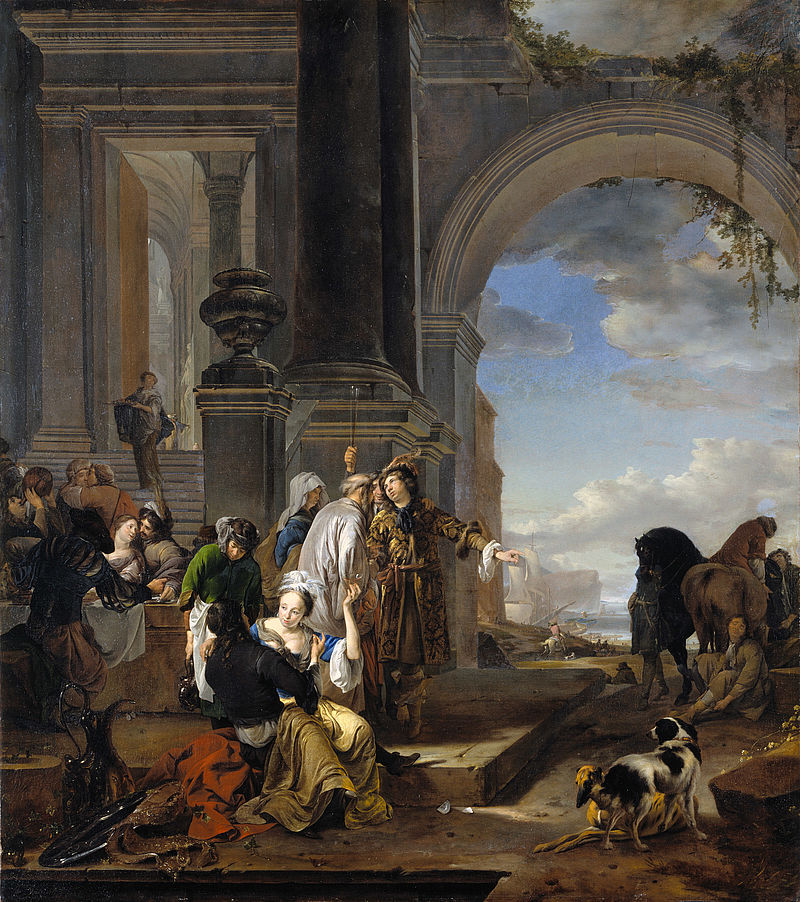The Prodigal Son
Jan Weenix the Younger (um/c 1641 - 1719)
Framesize 138.50 x 126.50 x 7.00 cm
Inventor of fantastic southern harbour scenes, Weenix sets the popular subject of the Prodigal Son (Luke 15,11–32) in the imposing architecture of an imaginary palace which, like the coastal landscape in the background, bears witness to the artist’s visits to Rome and Italy. Amid an evidently liberal company, the son, clad in costly brocade, takes leave of his aged parents. With an expansive gesture, he points to the horses harnessed ready for the journey.
Also displayed, however, are the licentious goings-on he will encounter, and the dissipation of his inheritance among whores. Finally, the return of the penitent is shown in the figure crouching on the ground, on the right. Weenix was not interested in depicing the precise sequence of the biblical narrative, but compressed the entire story into a single picture. Once more, he demonstrates his mastery of an almost tangible rendering of fabrics. He gives a vivid portrayal of the debauchery in the brothel scene – a popular subject known as bordeeltje. The implied admonition is emphatic, for just beside the elegantly arranged costly vessels is the gaping abyss.
OEHRING Erika: Weenix Jan the Younger, The Prodigal Son, in: DUCKE Astrid, HABERSATTER Thomas, OEHRING Erika: Masterworks. Residenzgalerie Salzburg. Salzburg 2015, p. 60


